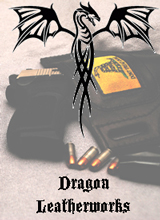You gotta love poorly thought-out “Gotcha” images like this:

Well, shining bulb, what of the corollary? If guns don’t make us safer, why isn’t the United States the most dangerous nation in the world.
These little compare-and-contrast images really are deeply shallow and rarely reflect reality. Like the UK being safer than the United States, often being a reference for support on their near wholesale ban on guns. Yet their metrics for “Murder” are so different they can’t really be compared. Or the comparisons of the US and Canada for crime rates, without noting that only about 60 years ago the US and Canada had IDENTICAL gun laws, and Canada was STILL safer.
And of course there is the ever-present clinging to “Gun Death” where the ignore the bulk of violent crime in one nation, and focus on a certain type of violent crime in this nation, and apply that to overall safety.
And of course the big elephant in the room is our DROPPING crime rate. In the end this is all fear mongering because they REFUSE to talk about ACTUAL safety since that doesn’t fit their narrative.



There have been periods where Canadian and British gun laws were LESS restrictive than many US localities, and yet, even in nearly identical demographic areas (in the case of Canada, communities that were identifiable as different only by using British spelling and crowns on side of the border), and violence rates were lower in Canada and the UK (outside Ireland).
The New York state Sullivan Act, requiring a possession permit for handguns, was passed in 1911. Canada didn’t pass anything similar until 1919 — and then even THAT was out of effect from 1921 – 1932 (except for people who weren’t British subjects). Yet Canadian communities bordering US communities were STILL less violent, even in places where two cities effectively merged at the border, with the border running down a common street (and no fences, gates, etc.)
Likewise, remove a few very geographically constrained areas (compromising only a few percentage points of teh US population), and the US would suddenly drop nearly off the bottom of the chart of nations ranked by rates of violence.
It’s almost as if violent criminals (who are a tiny percentage of the population and generally VERY geographically constrained to bad neighborhoods) are doing almost ALL the violence, and the vast majority of Americans are absolutely NO threat to their neighbors. . .
You can even find the corollary to your argument by looking at our southern border for contrast. Specifically, the El-Paso/Cuidad-Juarez area. Mexico’s gun laws are FAR more restrictive than the U.S.’s, yet El Paso is one of the safest towns in America, while Juarez – just over the river – is one of the most dangerous in the world.
Kinda makes you wonder if the problem might not be the guns in those communities, but the people. Specifically, a small subset of the people.
Also given the cartel involvement in Juarez, and the fact that El-Paso is in Texas, I suspect the per-capita arms in each city are about the same.
Of course the GUNS are different, given that one side has lawfully held guns, while the other side guns are forbidden, and most of the guns are stolen from the Mexican army.
Right. The per-capita arms numbers are probably pretty close, but the per-lawful-civilian arms numbers are WAY different.
What’s the old soundbite? “When guns are outlawed, only outlaws will have guns.”
Of course the sad part is some of the “Outlaws” are the good citizens of Mexico who chose to live in Juarez for legal reasons, or because their family has ALWAYS lived in that city, and they have armed up just to keep safe from the Cartels and other underworld figures, some of whom are the POLICE!
So again, outlaw all guns, and even the good guys can be “outlaws”. Sad.
Geodkyt, thanks. There’s purportedly suggestive evidence based on criminal records in Philadelphia from the 1820s and 1830s that American rates of violence were higher then than elsewhere before the revolver, before the semi-auto. I read that in a comment on another Web site. I don’t have a reference.
FWIW-the city where I work had a 50/100,000 murder rate for a few years in the 1990s. The ADJACENT suburb with about the same population has had, ballpark, about a 1/100,000 murder rate for many years.
Heck the text itself has a logical inconsistency.
It is literally. “If X makes US saf*er*. Why are we not saf*est*?”
So… do they really fell “Sure guns make us safer, but they don’t make us safest!”
Or are they simply ignorant of how grammar works?
Also we see their whole view that every single existing gun law doesn’t count. (Of course when pushing for a law they’ll claim it does everything). But if you point out this pic can only mean they want confiscation they’ll claim you’re paranoid… while they go on about how great confiscation would be.
“If guns make us safer” is an open ended / incomplete statement.
I barely have a clue where such a statement would come from, a coalition more concerned about utility than human rights? Not likely, but they like to think that they do.
Consider automobile safety – the number of cars out there and the number of fatalities is a crude metric. Organizations that actually have a real concern for safety consider the USE of the autos vs fatalities (say, vehicle miles vs. fatalities), arguing the actual number of autos is, bluntly, infantile.
If an organization is concerned with firearm safety they would be looking at use (say, rounds used yearly) vs fatalities. The results may be surprising.
Considering that lawful gun owners tend to fire way, WAY more rounds per year than unlawful ones, comparing the number of rounds fired total, versus the number fired unlawfully/negligently, versus the number fired unlawfully/negligently resulting in injury/death would produce a metric that is both more valid overall and even more damaging to the anti-rights folks’ case.
Even better, count the DGU rounds-fired separately and either categorize them differently or remove them from the study; being a presumed-lawful use of a gun and ammunition, it doesn’t fit in with either of the unlawful-/negligent-use categories, and is therefore a statistically-valid exclusion even if it results in an injury/death. Or, just leave them lumped in with the lawful rounds-fired. (Since we’re studying lawful vs. unlawful gun use, we don’t really need to look at DGU injuries/deaths separately; it’s beyond the scope. Technically, we can [and should] exclude suicides for the same reason.)
In short, instead of assuming every gun is a crime waiting to happen, examine how the guns are actually being used and compare these real “use cases” against the harm “caused” by firearms. I like it! 🙂
” . . . [U]se (say, rounds used yearly) vs. fatalities . . . .” You’re right, Burnt Toast. Firearms discharges of all sorts vs. unlawful discharges vs. unlawful discharges resulting in death may be another way of understanding what we’re talking about. (I’m definitely a non-expert here. The statistics and inferences may be a real bear to collect and derive.)
A month ago I read that CCI alone manufactures 4 million rounds of .22 ammo daily. I did a little speculative head-scratching. How many of those rounds are used unlawfully? One? Three? None?
Thanks to everyone for your comments. I’m learning.
Mr. Lawful owns 20 firearms and shoots 6000 rounds annually. Mr. Unlawful owns 1 firearm and commits a homicide with the single round he shot in a year. There seems to me a real qualitative AND counter-cliched quantitative difference in behaviors that’s not being recognized in the media.
Burnt Toast and Archer hit on something, I think. Better quantification, or more meaningful quantification of actual gun use for better comparability and better understanding of what Second Amendment liberty means.
Because it isn’t guns that makes us safer. Guns are just a tool, neither good nor bad. It is training and the will to defend ourselves.
If guns completely disappear tomorrow, is the world safe? Or is it just violent with different tools?